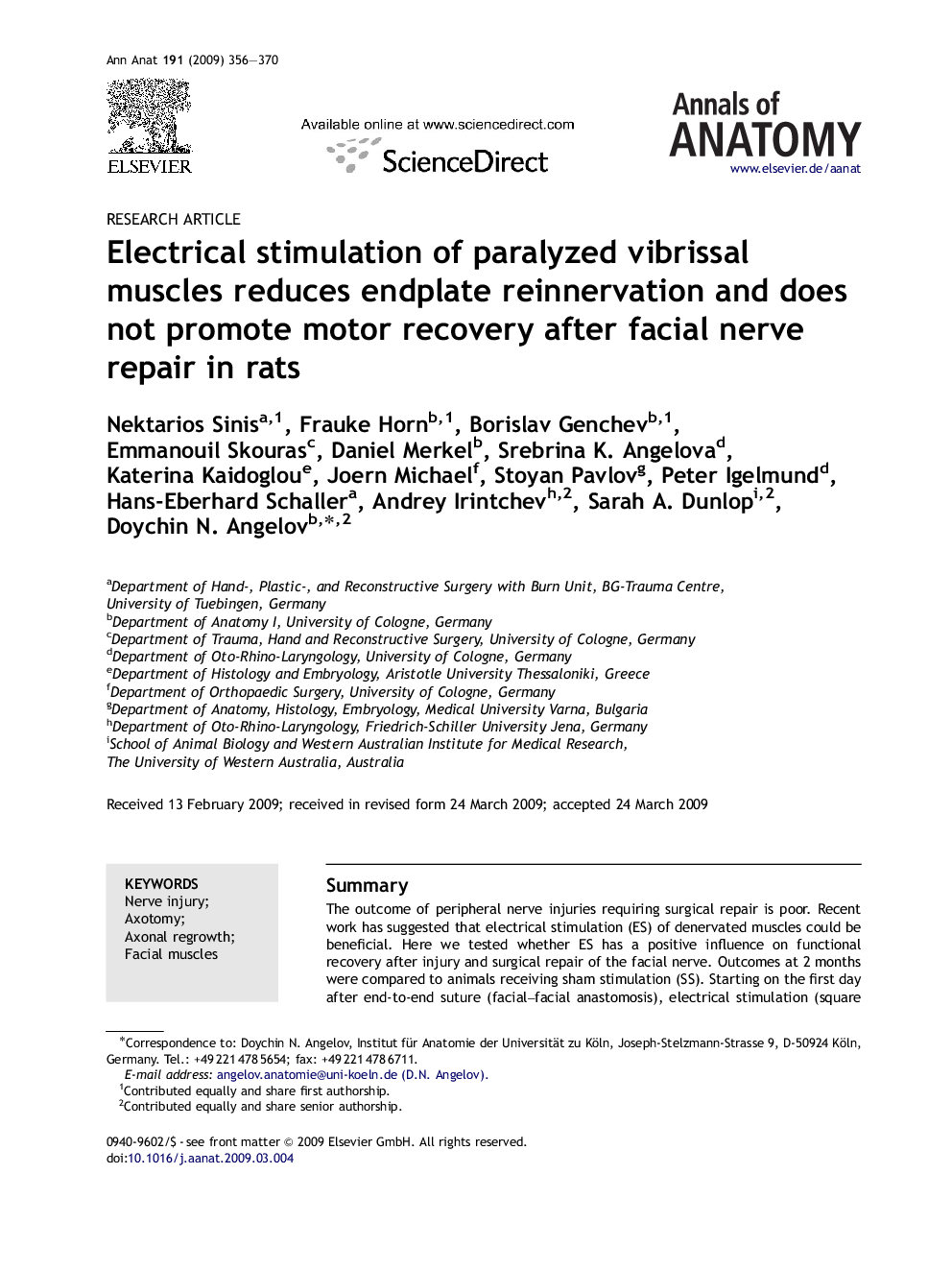| Article ID | Journal | Published Year | Pages | File Type |
|---|---|---|---|---|
| 8462409 | Annals of Anatomy - Anatomischer Anzeiger | 2009 | 15 Pages |
Abstract
The outcome of peripheral nerve injuries requiring surgical repair is poor. Recent work has suggested that electrical stimulation (ES) of denervated muscles could be beneficial. Here we tested whether ES has a positive influence on functional recovery after injury and surgical repair of the facial nerve. Outcomes at 2 months were compared to animals receiving sham stimulation (SS). Starting on the first day after end-to-end suture (facial-facial anastomosis), electrical stimulation (square 0.1Â ms pulses at 5Â Hz at an ex tempore established threshold amplitude of between 3.0 and 5.0Â V) was delivered to the vibrissal muscles for 5Â min a day, 3 times a week. Restoration of vibrissal motor performance following ES or SS was evaluated using the video-based motion analysis and correlated with the degree of collateral axonal branching at the lesion site, the number of motor endplates in the target musculature and the quality of their reinnervation, i.e. the degree of mono- versus poly-innervation. Neither protocol reduced collateral branching. ES did not improve functional outcome, but rather reduced the number of innervated motor endplates to approximately one-fifth of normal values and failed to reduce the proportion of poly-innervated motor endplates. We conclude that ES is not beneficial for recovery of whisker function after facial nerve repair in rats.
Related Topics
Life Sciences
Biochemistry, Genetics and Molecular Biology
Cell Biology
Authors
Nektarios Sinis, Frauke Horn, Borislav Genchev, Emmanouil Skouras, Daniel Merkel, Srebrina K. Angelova, Katerina Kaidoglou, Joern Michael, Stoyan Pavlov, Peter Igelmund, Hans-Eberhard Schaller, Andrey Irintchev, Sarah A. Dunlop, Doychin N. Angelov,
